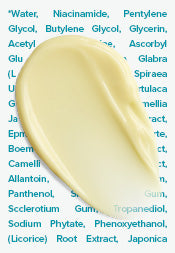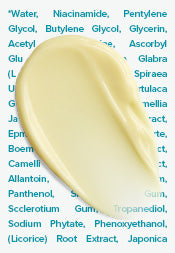The Best Moisturizers for Oily, Acne-Prone Skin
When you think of skincare products for oily, acne-prone skin, moisturizers probably aren’t at the top of your list. After all, doesn’t using a moisturizer mean more pimples, more clogged pores, and annoying oily shine? Given these concerns, it’s understandable to worry that applying a blemish cream or lotion could make matters worse, but there’s a no-risk way to hydrate, even if you have acne-prone skin.
Hydrated skin is healthy skin, even if you’re prone to acne breakouts and oily skin. Moisturizers aren’t limited to thicker textures; there are lightweight options that will smooth and soothe skin without clogging pores.
Feather-Light Moisture
The Paula’s Choice Skincare Team has spent years researching ways to give oily, acne-prone skin the beneficial ingredients it needs with lightweight yet still-potent formulas that strike the right balance for your skin. Whether you need a moisturizer for your face or other parts of your body like your neck or arm, one of these is sure to be the right solution for you. All of them can be used along with other skincare products, such as C15 Super Booster to brighten skin and exfoliators for unclogging pores.
1. SKIN BALANCING Invisible Finish Moisture Gel (For Normal to Oily/Combination skin)
The SKIN BALANCING Invisible Finish Moisture Gel is a skin-refreshing, weightless hydrator for your face, neck and eye area that makes skin visibly softer and smoother while protecting it against signs of flaky, dehydrated skin. This moisturizer also contains Niacinamide, which helps to reduce enlarged pores.
2. SKIN BALANCING Ultra-Sheer Daily Defense SPF 30
Those with oily, acne-prone skin often skip sunscreen, worrying that thicker formulas can clog pores, but the sun’s UV rays are damaging to skin, so it’s critical to wear SPF every day. The SKIN BALANCING Ultra-Sheer Daily Defense SPF 30 is a remarkably light, fluid lotion formula that defends against the sun’s rays while keeping excess shine in check.
3. CALM Nighttime Moisturizer for Oily to Combination Skin
The CALM Nighttime Moisturizer for Oily to Combination Skin provides feather-light cream-gel hydration to lessen the signs of ageing, while calming the appearance of redness and sensitivity.
4. CALM Daytime Moisturizer SPF 30 for Oily to Combination Skin
The CALM Daytime Moisturizer SPF 30 for Oily to Combination Skin is a lightweight, soft matte finish moisturizer with sunscreen that soothes sensitive skin while still providing powerful yet gentle protection to your face and body.
5. RESIST Super-Light Daily Wrinkle Defense SPF 30
An age-fighting, pore-smoothing formula, the RESIST Super-Light Daily Wrinkle Defense SPF 30 protects your skin against the sun’s rays with pure mineral zinc oxide sunscreen and a light tint that keeps it from having a white cast.
6. CLEAR Oil-Free Moisturizer
This sheer, ceramide-infused CLEAR Oil-Free Moisturizer features pore-minimising niacinamide and antioxidants to soothe redness without causing acne breakouts. This non-greasy moisturizer provides water-light hydration, eliminates dry, flaky patches, and visibly corrects issues unique to acne-prone skin—without adding oil, clogging pores or making breakouts worse.
7. CLEAR Ultra-Light Daily Hydrating Fluid SPF 30+
The CLEAR Ultra-Light Daily Hydrating Fluid SPF 30+ is a water-light liquid sunscreen that alleviates areas of dryness and flaking without feeling the least bit slick, greasy, or suffocating. It visibly improves uneven skin tone and helps soften the look of enlarged pores.
No matter the severity of acne, your skin deserves the right amount of hydration to remain healthy and absorb what it needs to restore your skin. Find out more about the types of acne and solutions here.
Learn more about moisturizers.
Learn more about oily skin.
Shop Paula’s Choice award-winning moisturizers for oily/ acne-prone skin.
References for this information:
Phytotherapy Research, August 2015, issue 8, pages 1117–1122
Dermatology Research and Practice, July 2014, pages 1–11
British Journal of Dermatology, August 2007, pages 295–300












